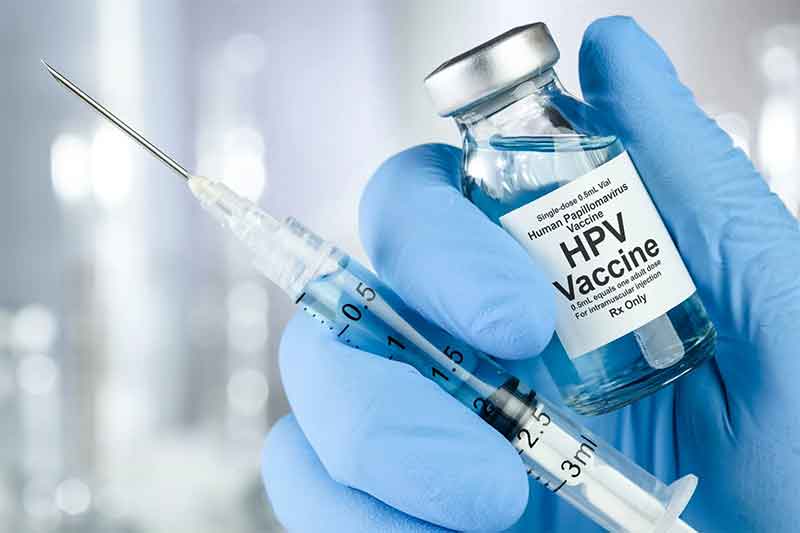
It is now well that the powerful tobacco lobby spread many falsehoods to undermine the steadily growing scientific evidence regarding the very serious health risks of tobacco. Millions of dollars were spent on this lobbying, with huge benefits doled out to corrupt scientists, decision-makers and media. The lobbyists and their collaborators made huge fortunes while public health suffered a lot.
Something similar is now happening in the context of alcohol, with the highly resourceful and powerful alcohol lobby spending lavishly to compromise decision makers, researchers and media. While collusion with politicians and officials is important for getting contracts and thekas , pushing liquor vends right to the doorstep of even remote villages, media and researchers are important for spreading falsehoods that liquor is not so harmful after all, with the added subtle suggestion that a mild dose may even be good for you, as well as for creating a false but attractive sense of high living around alcohol to create new customers among youth in particular.
In some developing countries including India clever, subtle strategies pursued by lobbyists have even undermined strong traditional social values against alcohol, as mass media was used to identify alcohol consumption with modern living while the social values against alcoholism were treated with disdain and equated with backwardness and outdated thinking. In several households, including rural ones, the total avoidance of alcohol has been replaced by regular consumption within a generation, with heavy health, social and economic costs.
Despite all this, however, the latest research continues to confirm very serious adverse health impacts of alcohol and what is more, some responsible public health officials have been coming forward to refute the lobbyist driven false propaganda. Britain provides one example of this. Dame Sally Davies, Chief Medical Officer of Britain, recently overcame a lot of resistance from liquor industry lobbyists to radically change two decade old guidelines which had understated health risks of liquor while also either implicitly conceding or at least not adequately refuting imaginery claims of some health benefits ( for example in the context of red wine) spread by lobbyists and sellers of liquor.
The new guidelines came in the wake of growing concern over reported 500 per cent increase in deaths from liver disease among working age people in Britain since the 1970s. Another serious concern came with growing evidence of higher risks of a range of cancers associated with liquor, including red wine.
The evidence regarding the closer link between liquor and a range of cancers was supported by a new review from the Committee on Carcinogenicity in Britain. The development of the new guidelines was chaired by Prof. Mark Petticrew, Prof. of Public Health Evaluation at the London School of Hygiene and Tropical Medicine and by Prof. Sally Macintyre, Prof. Emeritus at the University of Glasgow.
The new guidelines on liquor consumption released on 8 January 2016 by the Chief Medical Officer to replace nearly two decade old guidelines warn that drinking any level of alcohol increases the risk of a range of cancers. The guidelines also make it clear that no level of alcohol is safe for drinking in pregnancy.
These guidelines inform that drinking regularly over time can lead to a wide range of illnesses including cancers, strokes, heart diseases, liver diseases, and damage to the brain and nervous system.
On the other hand, these guidelines also make it clear that there is no justification for drinking for health reasons.
There is growing worldwide concern at the escalating costs of alcohol consumption in terms of very serious health problems.There is more evidence than ever before of very serious health risks from alcohol but despite this, at least partly because of the overactive lobbyists, the overall trend in the world from 2005 to 2025 is of a significant rise in liquor consumption. This is also the overall conclusion of the World Status report on Alcohol 2018 prepared by the WHO.
The per capita per year pure alcohol consumption at the world level increased from 2005 to 2016 and is projected to increase again from 2016 to 2025. However the world level increase rate is much lower than the very fast rate of growth of liquor consumption in India. The world level increase is driven above all by the rising trend in two highly populated countries, India and China. The rate of increase is higher in India than in China.
In India the per capita per year pure alcohol consumption increased from 2.4 litres in 2005 to 5.7 litres in 2016, a more than double increase in roughly a decade. This is projected to increase to about 8 litres in 2025 when for the first time since records are available the average consumption in India at 8 litres is projected to be higher than the world average of 7 litres.
According to the WHO Status report, in 2016, the harmful use of alcohol resulted in some 3 million deaths (5.3% of all deaths) worldwide and 132.6 million disability-adjusted life years (DALYs) – i.e. 5.1% of all DALYs in that year. Mortality resulting from alcohol consumption is higher than that caused by diseases such as tuberculosis, HIV/AIDS and diabetes. Among men in 2016, an estimated 2.3 million deaths and 106.5 million DALYs were attributable to the consumption of alcohol. Women experienced 0.7 million deaths and 26.1 million DALYs attributable to alcohol consumption.
The WHO report tells us that in 2016, of all deaths attributable to alcohol consumption worldwide, 28.7% were due to injuries, 21.3% due to digestive diseases, 19% due to cardiovascular diseases, 12.9% due to infectious diseases and 12.6% due to cancers. About 49% of alcohol attributable DALYs are due to non-communicable and mental health conditions, and about 40% are due to injuries.
13.5% of all deaths among those who are 20–29 years of age are attributed to alcohol.
Explaining the situation further this report tells us that the health and social harms from drinking alcohol occur through three main interrelated mechanisms: 1) the toxic effects of alcohol on diverse organs and tissues in the consumer’s body (resulting, for instance, in liver disease, heart disease or cancer); 2) development of alcohol dependence whereby the drinker’s self-control over his or her drinking is impaired, often involving alcohol-induced mental disorders such as depression or psychoses; and 3) through intoxication – the psychoactive effects of alcohol in the hours after drinking
According to research works consulted for preparing this status report alcohol consumption has been shown to increase the risk of HIV/AIDS by increasing the risk of transmission (resulting from an increased risk of unprotected sex ) and by increasing the risk of infection and subsequent mortality from tuberculosis and lower respiratory infections by suppressing a wide range of immune responses via multiple biological pathways, particularly in people who engage in heavy episodic drinking or who chronically consume large amounts of alcohol .
The harmful use of alcohol is associated both with an increased risk of acquiring HIV infection and with negative effects on people living with HIV/AIDS in terms of treatment outcomes, morbidity and mortality.
Further the WHO status report informs us that alcohol consumption has a synergistic effect with viral hepatitis in the progression of liver disease . In addition, alcohol is a well-known causal factor for non-infectious liver diseases, including hepatitis and liver cirrhosis, and the latter is associated with high mortality.
Coming to cancer this report says that there is an established causal link between alcohol use and cancer development in the oropharynx, larynx, oesophagus, liver, colon, rectum and the female breast . The risks are generally higher for females than males. Even moderate alcohol intake, corresponding to daily consumption of no more than 25 grams of pure alcohol, has been shown to increase the risk of developing female breast cancer.
This report informs us that the causal relationship of alcohol consumption and liver diseases is well established, and alcohol has been shown to have an ability to cause hepatocellular damage through ethanol metabolism-associated mechanisms and malnutrition Alcohol is one of the most frequent causes of liver disease; alcohol-involved subtypes of liver disease include alcoholic hepatitis, steatosis, steatohepatitis, fibrosis and cirrhosis. Acute alcoholic hepatitis and liver cirrhosis are associated with high mortality (which can reach 50% in acute alcohol hepatitis), and the median survival time of patients with advanced liver cirrhosis can be as low as 1–2 years.
Giving an example from China this report mentions the Beijing 302 Hospital which is a large hospital treating patients from most parts of China, including over 40 000 patients per year with liver disease. Those treated for liver disease at the hospital are thus reflective of trends in liver disease in China. In the period 2002–2013, the distribution of types of liver disease changed at the hospital, with the proportion of alcoholic liver disease (ALD) more than doubling . Throughout this period, most of the patients with ALD (about 98%) were male. A study reporting this remarked that “the number of patients with ALD is rising at an alarming rate in China”.
The WHO report refers to expansive literature which shows that alcohol intoxication can increase dysphoria, cognitive dysfunction, impulsivity and intensity of suicidal ideation. People have approximately seven times increased risk for a suicide attempt soon after drinking alcohol, and this risk further increases to 37 times after heavy use of alcohol . The alcohol-attributable fraction for suicide was estimated to be as high as 18% It is also known that the presence of AUDs (Alcohol Use Disorders) at least doubles the risk of having depression .
This report points out that the potential effects of alcohol include impairment in attention, cognition and dexterity (which are important for such activities as driving a car); aggressive impulses and loss of behavioural control (important for criminal violence); and alcohol poisoning (which can be fatal).
Further this report tells us that alcohol poisoning is a consequence of drinking large amounts of alcohol in a short period of time. Drinking too much in a short period of time can affect breathing, heart rate, body temperature and gag reflex and may result in a coma and death. In comparisons with other psychoactive substances, alcohol is among the most lethal in terms of how close the amounts used for psychoactive effects are to the median amount that is lethal. While poisoning clusters from contaminated alcohol often receive global press coverage, poisoning with ordinary beverage alcohol – usually in concentrated form such as distilled beverages – is an everyday reality in many societies, although it is often under-recorded in health statistics.
The harmful use of alcohol is a component cause of more than 200 diseases and injury conditions, the most notable being alcohol dependence, liver cirrhosis, cancers and injuries, the latest causal relationships established are those between alcohol consumption and incidence of infectious diseases such as tuberculosis and HIV/AIDs.
However, the alcohol industry and its lobbyists have worked overtime to ensure that the massive adverse impacts of alcohol consumption are not reported adequately and properly so that people do not become aware about the full dimensions of these tragic impacts. A recent study led by scientists at the London School of Hygiene and Tropical Medicine and Sweden’s Karolinska Institute has concluded that the alcohol industry “uses denial, distortion and distraction to mislead people about the risks of developing cancer from drinking, often employing similar tactics to those of the tobacco industry.” However, the WHO says that drinking alcohol is a well established risk factor for a range of cancers including tumors of the mouth, liver, breast, colon and bowel, and the risk of cancer rises with the level of alcohol consumed.
Earlier also heavy drinking was linked to damage to brain, adverse impact of memory and dementia, but recent findings by researchers of Oxford University and University College London ( published in British Medical Journal) has found that this damage is possible also at much lower alcohol consumption. This is also confirmed by another study involving 1300 women in the USA. Brain damage is likely to be higher in the case of binge drinking, particularly binge drinking involving adolescents.
Although the highly adverse impacts of alcohol consumption are very well-known, the alcohol industry has been trying for quite some time to somehow spread the myth that moderate levels are not a problem.
However an extensive study based on 195 countries which was published in the prestigious medical journal The Lancet (August 2018) concluded clearly that not even one drink a day is safe.
Max Griswold, lead author for a group of over 500 experts said, “There is no safe level of alcohol,” “Overall, the health risks associated with alcohol rose in line with the amount consumed each day.”
Compared to abstinence, just one drink a day can lead to 1,00,000 additional deaths each year.
In the 15-49 age-group, alcohol is responsible for over 12% of deaths among all.
Deaths in this age-group is generally believed to cause more distress in households.
Considering 24 health problems, this study found that five drinks a day can raise severe health consequences by 37%. In Romania male drinkers average 8 drinks a day, while in Portugal and Ukraine they average 7 drinks a day.
Clearly the evidence of very adverse health impacts of alcohol remains very strong, despite all the efforts of resourceful lobbyists to undermine this evidence. In addition there are other equally and in some contexts even more damaging social impacts of alcohol. For instance a lot of research worldwide suggests alcohol use by perpetrator to be involved in as many as about 50 per cent of all sexual assaults, apart from being an important factor in other crimes and violence as well.
Bharat Dogra is a journalist and author. His recent books include Man Over Machine and Earth without Borders.
GET COUNTERCURRENTS DAILY NEWSLETTER STRAIGHT TO YOUR INBOX

















































